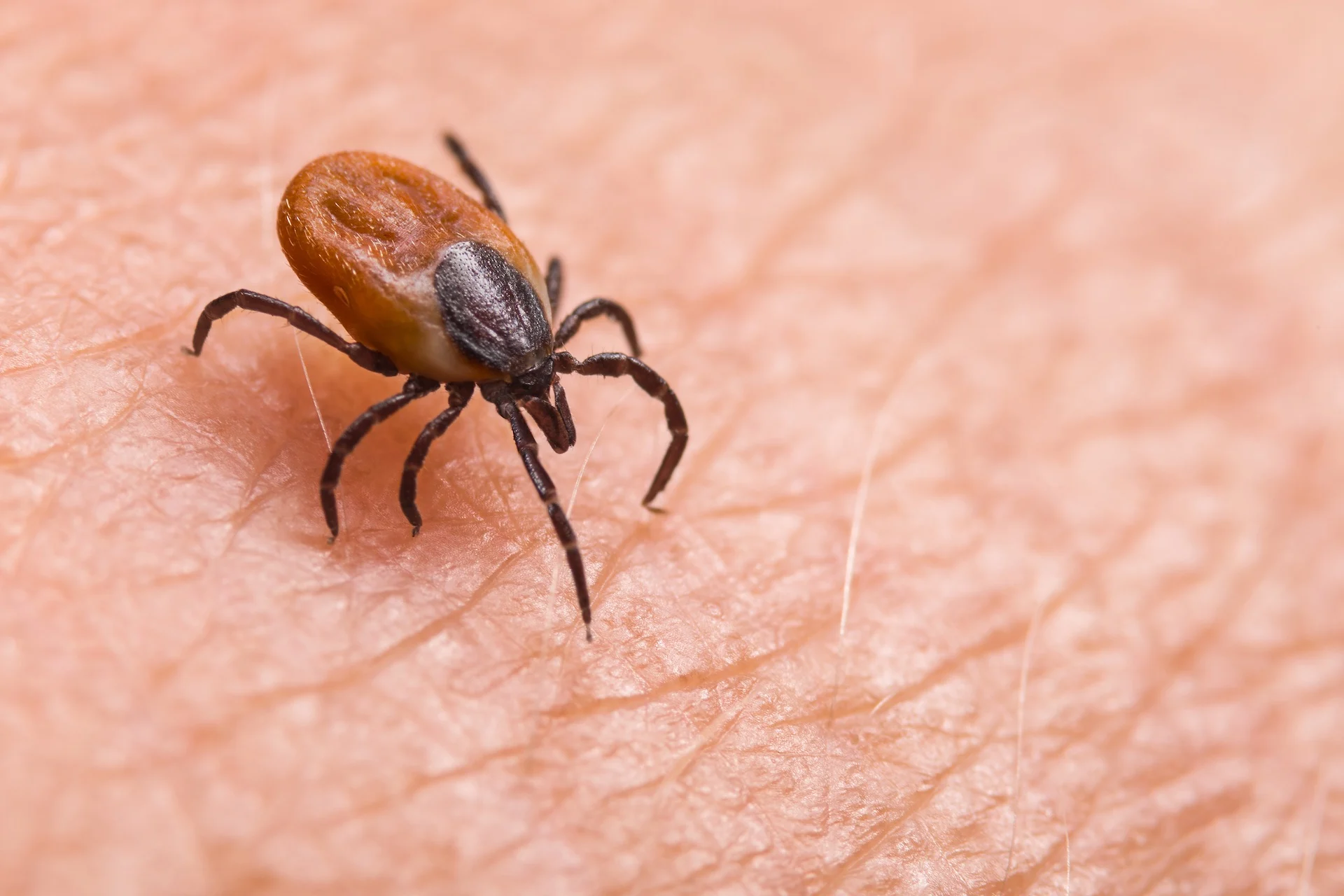
'Pretty much everywhere': Couple pulled over a dozen ticks off their dog
Hike up your socks and check your pets — tick season is already in full force.
Rob and Kathy Bull of Cambridge, Ont., are warning others to check themselves and their pets.
After the couple took their four-year-old Jack Russell terrier, Roxy, for a short walk through Dumfries Conservation area, they had to pick about 20 ticks off their pet. Last week, they took to social media to post a video of nearly 20 ticks creeping around in a green vial.
"Mostly her abdomen, but there were a few [ticks] in her beard, a couple on the top of her head, behind her ears, shoulders. They were pretty much everywhere," Rob said.
The about one-kilometre trail he took Roxy on is made of clear-cut gravel.
"She's a Jack Russell, so she's faced down sniffing everything, always. And of course she's not that tall, so you know, it's hard to keep her on the path," he said. "But she did not wander off into the deep, deep grass or anything like that."

Rob and Kathy Bull took their Jack Russell, Roxy, on a one-kilometre walk through Dumfries Conservation Area in Cambridge, Ont., and ended up having to pick a bunch of ticks off their pet's body. (Cameron Mahler/CBC)
Ticks are related to spiders and also have eight legs, with flat, oval bodies that swell when they eat. They feed on the blood of all animals and humans.
While most ticks don't carry diseases or cause serious health problems, some do.
Luckily for Roxy, the ticks were identified as being dog ticks, not their Lyme-disease-producing cousin, the black-legged tick, also known as the deer tick.
Rob removed a good portion of them by hand, but had to use a tick-removal tool to get the rest.
"They weren't attached, thankfully, because it just happened," Kathy added.
"We got tick and flea medication for her, but I had laxed on giving it to her," she said. "And I've spoken to a lot of other people — they've also forgotten."
Season of the ticks
Even Katie Clow, a veterinarian, is among those forgetful individuals.
"I need reminders to make sure that my dog gets it," she said.
Clow is also an associate professor at the University of Guelph as well as a tick and tick-borne disease expert.
The Bulls, along with many people online, are under the impression that Waterloo region's warm winter has caused local tick populations to thrive, but that's not entirely true.
Clow said ticks can survive mostly any winter by living under the brush layer. The increased population comes from a mixture of a couple of things, including the fact people are just more aware of them.

The path Roxy walked through Dumfries Conservation Area was all gravel, but that didn't stop the ticks from latching onto her. (Cameron Mahler/CBC)
"Tick populations are creeping north and each year we find new places where they've established. And so it's a combination of factors," she said.
"Certainly we do have better awareness, which is great, but it's also that our ticks are just getting worse."
Check for ticks
A release from Wellington-Dufferin-Guelph Public Health says people who get bitten by ticks should carefully remove them, take a photo and upload it to their online submission page or the province's website, etick.ca.
From the uploaded photo, the tick can be identified and next steps are recommended.
Clow also offered some ways to ensure you and your pets' safety. The No. 1 step is, "Doing good tick checks when you come back in from tick habitat."

(Government of Canada/Supplied)
Especially in tall grass and brushy areas, ticks like to climb up to the tops of the vegetation and lay in wait, preparing to latch onto whichever host may brush by.
Clow recommends "searching all over your pet, particularly head and ears ... because that's where they're sniffing and sticking their head into tick habitats."
"We want to get them before they attach or really quickly after they attach."
That doesn't mean people have to stay indoors.
"We have so many beautiful areas," she said, "but as much as possible, staying to marked paths, well-groomed areas away from the brush and grass and forest."
WATCH: Wildfires could be pushing ticks out of the woods and into the city
Thumbnail courtesy of Getty Images - 1162834740.
The story was originally written by Cameron Mahler and published for CBC News.









